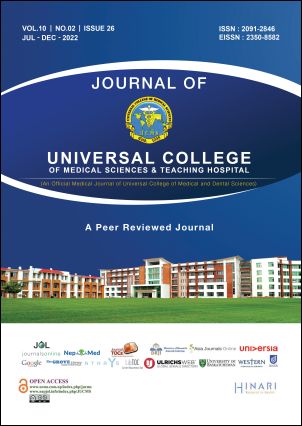Regenerative Medicine's Current State of Affairs
DOI:
https://doi.org/10.3126/jucms.v10i02.51395Keywords:
Regenerative medicine, Tissue engineeringAbstract
The basic concept behind tissue engineering is to recreate existing surgical or mechanical device-related procedures, even if those procedures greatly reduced the rate of untimely death. The phrase "Tissue Engineering" (TE), coined in 1933 by Langer and Vacanti, refers to the time-on-demand of available organ donors and suitable complementary biological habitats.
TE is the multifaceted product of researchers that have significantly modified and recreated the in vivo biological niche using a combination of synthetic biomaterials, cells of interest, and biochemical components, which are crucial for tissue growth. The disciplines of regenerative medicine have been transformed by the new generation of biomaterials, and the advancement of 3D architecture may allow us to replicate the perfect in vivo tissue organoid.
Downloads
Downloads
Published
How to Cite
Issue
Section
License
Copyright (c) 2022 Journal of Universal College of Medical Sciences

This work is licensed under a Creative Commons Attribution-NonCommercial 4.0 International License.
Authors have to give the following undertakings along with their article:
- I/we declare that this article is original and has not been submitted to another journal for publication.
- I/we declare that I/we surrender all the rights to the editor of the journal and if published will be the property of the journal and we will not publish it anywhere else, in full or part, without the permission of the Chief Editor.
- Institutional ethical and research committee clearance certificate from the institution where work/research was done, is required to be submitted.
- Articles in the Journal are Open Access articles published under the Creative Commons CC BY-NC License (https://creativecommons.org/licenses/by-nc/4.0/)
- This license permits use, distribution and reproduction in any medium, provided the original work is properly cited, and it is not used for commercial purposes.




